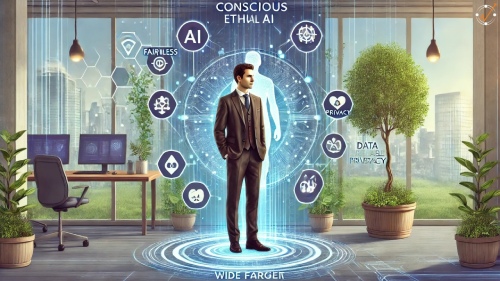Neuromorphic computing – A new horizon awaits….
By Manoj Gupta, Founder
When Peak becomes a Plateau, new avenues open…
The Current state
When Intel founder Gordon E. Moore made this phenomenal prediction in 1965 that overall compute processing power will double every two years, he was met with disbelief. But his statement stands tall even after elapse of 50 years.
However, as his law, famously called as Moore’s law is starting to reach its’ maturity - the researchers & techies around the world are scratching their heads to find an alternative for continual growth in computing speed.
The CPUs today, largely use 14 nanometers (nm) structures. There are only two more miniaturization cycles left until we hit the physical barrier of 5 nm, as it can’t get any smaller below that mark.
In this digital age, processing large amounts of data is becoming an ever-increasing norm to suffice Omnichannel connectivity including Artificial Intelligence & Machine learning requirements – adding further demand to CPU speed.
What next…?
The emergence of Neuromorphic computing
The standard chips which are made today are based on Von Neumann Architecture having CPU and Memory separate, and data moves between the two. This makes a computer good at computing but not as efficient, as they could be. In addition, the computers today function in binary mode where everything is either 1 or 0 i.e. Yes or No – limiting to only two options.
This makes software programming languages to be structured & written in a certain rigid way, to suffice the binary limitation of the hardware.
However, neuromorphic chips completely change this model – as it has both; Processing and Memory connected inside the Neurons. This means that it can communicate and learn simultaneously, similar to a biological neuron inside the human brain. This unique feature gives more flexibility and a lot more computational options beyond the current binary architecture limitations of ‘Yes’ or ‘No’.
This brings a paradigm shift to traditional computing - from general-purpose calculators of today to machines-of-tomorrow that can learn-from-the-experience and make- decisions-in-real time. Also, the ability to communicate an acclivity of understanding from neuron-to-neuron concurrently, means that neuromorphic chip will consume much less power than traditional computers.
Neuromorphic chips use the physics of the human nervous system in its’ computation process.
This is completely different from the chips of today’s binary architecture machines, where, the AI programming languages mimic the logic as to how human brain thinks i.e. the outside-in; but not the mechanics of brain inside-out, as depicted by neuromorphic architecture.
Therefore, while having a human brain like architecture brings a paradigm shift in computational power and hardware design – it also poses an exciting challenge to programming languages compatible with today’s binary processors….
Where does this leave the Programming languages…
The programming languages in today’s world are architected for computers having binary mode - comprising one central processor and one memory unit, which interacts with each other to execute the tasks.
However, in the neuromorphic computing world, every Neuron will have a processor and memory unit with independent communication between them. And there will be millions of Neurons on each chip, all connected to each other.
Therefore, programming paradigm will have to be completely overhauled and developers have to rethink everything - as there is nothing of the old architecture left, and hence you can’t run traditional programs!
The new programming languages have to be developed as the current & new worlds, would be completely apart. So, get ready for a whole new meaning…
Summing up…
Neuromorphic computing - the hardware version; and Neural network - the software version, once brought together will bring a resplendent shift to the technology world as it would replicate the mechanics of the human brain from core-to-periphery.
We leap into a new future. We don’t have machines with a sophisticated human brain like architecture today, but they are on horizon…
Note: You are welcome to reach out to Author for further details, to explore how this can impact and help your business. Please do not reproduce, change or remove the information without written permission.


